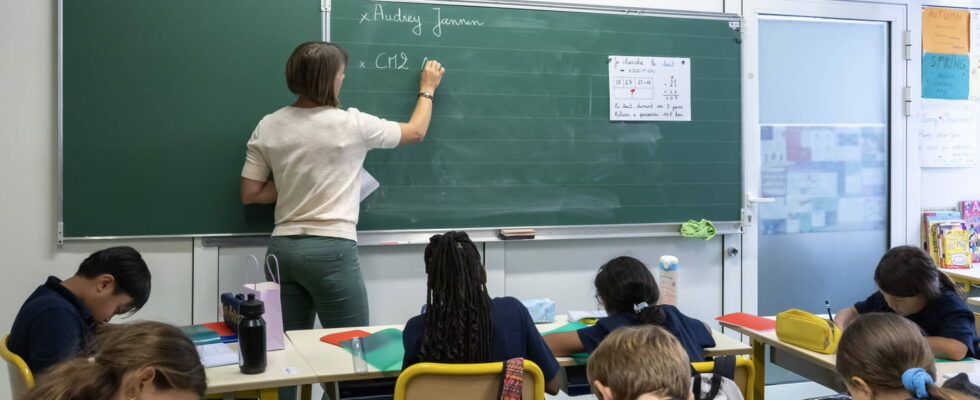According to a study, there is a shortage of at least one teacher in more than half of secondary schools.
The new school year began this Monday. While some new measures have been implemented, such as the generalization of assessments in primary school or the experiment of a total ban on mobile phones in middle school, a major problem arose as soon as classes resumed. According to a survey conducted by the Snes-FSUthe leading secondary school union, based on a sample of 893 establishments, over the period from August 30 to September 5, excluding occasional absences, there are many teachers missing in front of classes.
According to the results, “at least one teacher was missing in 56% of middle and high schools” on the morning of September 5. A figure close to a similar survey conducted last year, with 48% of middle and high schools concerned on September 8. The resigning Minister of National Education, Nicole Belloubet, had nevertheless assured, on the first day of school, that there were indeed teachers in front of the classes “in the vast majority of situations”.
“This shows that the recruitment crisis is well-rooted, and that urgent measures are needed and not just tinkering, as the Ministry of National Education is doing,” Sophie Vénétitay, the union’s general secretary, lamented to AFP. She is referring to the ministry’s recruitment website, which contains 1,646 classified ads for secondary education. This figure has increased in a few days: it was at 1,301 on September 1, which seems to clearly show a shortage of teachers at the start of the school year. The subjects that are struggling the most are French and mathematics, but also “to a lesser extent” modern languages, technology and eco-management.
Some academies are also more affected: two are located in the Paris region, Versailles (72%) and Créteil (63%). Lyon (68%) and Nantes (65%) are also part of it. Some are a little less affected, notably in Normandy (43%) but especially in Amiens and Rennes, even if there are still a few teachers missing.
What solutions?
In the public school teacher competition in the spring, more than 3,000 positions were not filled. Contract positions were then offered to compensate for this lack of teachers. However, this method is considered insufficient and not sustainable by the union. It also criticizes “training of sometimes only a few days” for these contract workers. “At this stage, it is obvious that replacements during the year will not be guaranteed,” the union denounces.
Faced with this situation, he is demanding an increase in salaries but also a reduction in class sizes. The same is true in primary schools. Three unions have called for a strike on September 10. They are protesting against the mandatory assessments of all students at the start of the school year but also against classes that are too large for not enough teachers, due to the lack of attractiveness of the profession.
